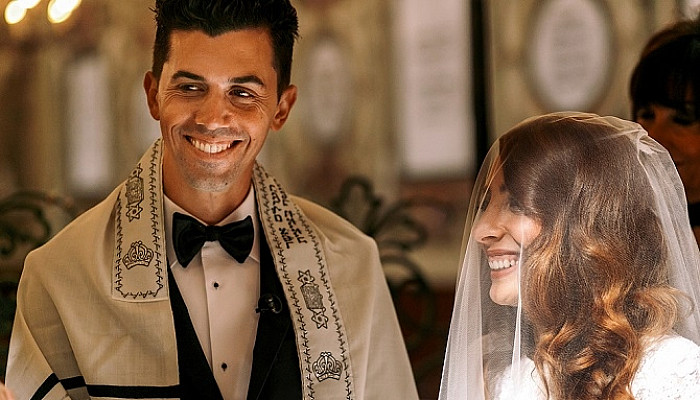
Jewish Wedding Customs

Jewish Wedding Customs or Traditions at the Wedding
The prominence of activities and exact expression of customs or traditions used in a Jewish wedding varies based on the denomination of Judaism of the people being married. Some of the most common customs are listed below. Some Jewish customs are less practiced today and some customs have been refined or modernized. One such Jewish wedding custom is known as The Ketubah. The bride and groom sign a Ketubah (a marriage contract). Originally, the Ketubah detailed the husband’s obligations to his wife, and provided for monetary payment to her in case of divorce. Nowadays,while literally it serves the same function, the Ketubah is a decorative keepsake that sets out expectations for both the bride and groom. It is typically framed and displayed in the Jewish couple’s home.
The Jewish wedding ceremony generally starts with the bride and groom being escorted to the huppah (a Jewish wedding canopy) by both sets of parents. The wedding ceremony takes place under the huppah, and is presided over by a Rabbi. After the wedding vows, seven marriage blessings are read and the groom then smashes a wine glass with his foot. The bride and groom spend time together alone before the wedding reception, which is traditionally a joyous celebration with much music and dancing.
Jewish Wedding Customs or Traditions at the Wedding Reception
There are several Jewish customs and traditional activities that often take place during the Jewish wedding reception:
- The wedding breakfast.
- Wedding table placecards , which in prior eras listed only the husband’s first name, now list the wife’s first name as well in all modern weddings, as a sign that women are a part of the Jewish community. To list only the husband’s name (e.g., Mr. & Mrs. Abraham Schwarz) is now viewed as a significant slight towards women in general, and to the specific couple in particular.
- The Hora, a dance in which the bride and groom hold opposite corners of a handkerchief while they are lifted up on chairs by the guests and whirled around.
- The Krenzl, in which the bride’s mother is crowned with a wreath of flowers as her daughters dance around her (traditionally at the wedding of the mother’s last unwed daughter).
- The Mizinke, a dance for the parents of the bride or groom when their last child is wed.
- The gladdening of the bride, in which guests surround the bride and sing her praises.
This content was created by AI





















